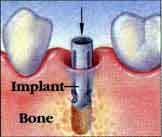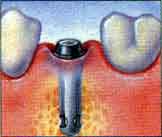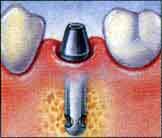Restorative and Cosmetic Options
In the past decade there has been a dramatic interest in cosmetic dentistry. We all realize that having a healthy, bright, beautiful smile enhances our appearance and allows us to smile with confidence. Thanks to the advances in modern cosmetic dentistry, we are able to improve our teeth and smiles with quick, painless and surprisingly affordable treatments.
Cosmetic dental treatments can:
-
Change the size, shape, and alignment of certain teeth.
-
Fill in unattractive spaces between teeth.
-
Improve or correct bites.
-
Lighten or brighten the color of teeth.
-
Repair decayed, broken, cracked, or chipped teeth.
-
Replace missing teeth.
-
Replace old, unattractive dental treatments.
Composite Fillings:
A composite (tooth colored) filling is used to repair a tooth that is affected by decay, cracks, fractures, etc. The decayed or affected portion of the tooth will be removed and then filled with a composite filling.
There are many types of filling materials available, each with their own advantages and disadvantages. You and Dr. Gianfortune will discuss the best options for restoring your teeth. Composite fillings, along with silver amalgam fillings, are the most widely used today. Because composite fillings are tooth colored, they can be closely matched to the color of existing teeth, and are more aesthetically suited for use in front teeth or the more visible areas of the teeth.
As with most dental restorations, composite fillings are not permanent and may someday have to be replaced. They are very durable, and will last many years, giving you a long lasting, beautiful smile.
Reasons for composite fillings:
- Chipped teeth
- Closing space between two teeth
- Cracked or broken teeth
- Decayed teeth
- Worn teeth
How are composite fillings placed?
Composite fillings are usually placed in one appointment. While the tooth is numb, your dentist will remove decay as necessary. The space will then be thoroughly cleaned and carefully prepared before the new filling is placed. If the decay was near the nerve of the tooth, a special medication will be applied for added protection. The composite filling will then be precisely placed, shaped, and polished, restoring your tooth to its original shape and function.
It is normal to experience sensitivity to hot and cold when composite fillings are first placed, however this will subside shortly after your tooth acclimates to the new filling.
You will be given care instructions at the conclusion of your treatment. Good oral hygiene practices, eating habits, and regular dental visits will aid in the life of your new fillings.
A crown (or cap) is a covering that encases the entire tooth surface restoring it to its original shape and size. A crown protects and strengthens tooth structure that cannot be restored with fillings or other types of restorations.
Although there are several types of crowns, porcelain (tooth colored crown) are the most popular, because they resemble your natural teeth. They are highly durable and will last many years, but like most dental restorations, they will eventually need to be replaced. Porcelain crowns are made to match the shape, size, and color or your teeth giving you a natural, long-lasting beautiful smile.
Reasons for crowns:
- Broken or Fractured Teeth
- Cosmetic Enhancement
- Decayed Teeth
- Fractured Fillings
- Large Fillings
- Tooth has a Root Canal
What does getting a crown involve?
A crown procedure usually requires two appointments. Your first appointment will include taking several highly accurate molds (or impressions) that will be used to create your custom crown. A mold will also be used to create a temporary crown which will stay on your tooth for approximately two weeks until your new crown is fabricated by a dental laboratory.
While the tooth is numb, the dentist will prepare the tooth by removing any decay and shaping the surface to properly fit the crown. Once these details are accomplished, your temporary crown will be placed with temporary cement and your bite will be checked to ensure you are biting properly.
At your second appointment your temporary crown will be removed, the tooth will be cleaned, and your new crown will be carefully placed to ensure the spacing and bite are accurate.
You will be given care instructions and encouraged to have regular dental visits to check your new crown
Porcelain Fixed Bridges
A dental bridge is a fixed (non-removable) appliance and is an excellent way to replace missing teeth.
There are several types of bridges. You and your dentist will discuss the best options for your particular case. The “traditional bridge” is the most popular type and is usually made of porcelain fused to metal. Porcelain fixed bridges are most popular because they resemble your natural teeth. This type of bridge consists to two crowns that go over two anchoring teeth (abutment teeth) and are attached to pontics (artificial teeth), filling the gap created by one or more missing teeth.
Dental bridges are highly durable and will last many years, however they may need replacement or need to be re-cemented due to normal wear.
Reasons for a fixed bridge:
- Fill space of missing teeth
- Maintain facial shape
- Prevent remaining teeth from drifting out of position
- Restore chewing and speaking ability
- Restore your smile
- Upgrade from a removable partial denture to a permanent dental appliance
What does getting a fixed bridge involve?
Getting a bridge usually requires two or more visits. While the teeth are numb, the two anchoring teeth are prepared by removing a portion of enamel to allow for a crown. Next, a highly accurate impression (mold) is made which will be sent to a dental laboratory where the bridge will be fabricated. In addition, a temporary bridge will be made and worn for several weeks until your next appointment.
At the second visit, you permanent bridge will be carefully checked, adjusted, and cemented to achieve a proper fit. Occasionally your dentist may only temporarily cement the bridge, allowing your teeth and tissue time to get used to the new bridge. The new bridge will be permanently cemented at a later time.
You will receive care instructions at the conclusion of the procedure. Proper brushing, flossing and regular dental visits will aid in the life of your new permanent bridge.
Implants
Tooth Loss can have a far-reaching effect on your dental health and personal appearance. When you lose one or more teeth, your remaining teeth can drift out of position. This can lead to a change in the bite, the loss of additional teeth, decay, and gum disease.
Dental Implants can be an effective method to replace one tooth or several teeth. Each implant consists of a metal anchor that is inserted into the jawbone, and a protruding post, which is outfitted with an artificial tooth. Implants can also support a bridge, replace a partial denture or secure a fixed denture. The process requires surgery and takes time to complete.
Several steps are usually necessary to place an implant. Depending on the type of implant, the steps may vary. The placement of a single-tooth endosteal implant is illustrated below:
   
In the first procedure a metal anchor, or artificial root, is placed into the jawbone. Bone grows around the anchor. This takes about three to six months for this to heal. Next, a "healing cap" is placed
when the implant is uncovered.Then, the healing cap is removed and a metal post, or abutment, may be attached to the anchor. When your gums and jawbone have healed, an artificial tooth is constructed, then screwed or cemented to the post. Fitting your new tooth properly may take several appointments.
| |
| Brush and floss your implant at least twice daily, as you would your natural teeth. Be sure to brush the back of the abutments and floss around the front, back, and sides. Avoid chewing on hard objects or extremely sticky food. Proper dental care will keep your dental implants and your mouth healthy. |
| |
Veneers
Veneers are very thin pieces of durable, tooth shaped porcelain that are custom made (for shape and color) by a professional dental laboratory. They are bonded onto the front of teeth to create a beautiful and attractive smile.
Veneers can completely reshape your teeth and smile. They can often be alternatives to crowns and the ideal solution in treating many dental conditions.
As with most dental restorations, veneers are not permanent and will someday have to be replaced. They are very durable and will last many years, giving you a beautiful long lasting smile.
Reasons for porcelain veneers:
- Cosmetically, to create a uniform, white, beautiful smile
- Crooked teeth
- Misshapen teeth
- Severely discolored or stained teeth
- Teeth that are too small or large
- Unwanted or uneven spaces
- Worn or chipped teeth
Reasons for tooth whitening:

- Fluorosis (excessive fluoridation during tooth development)
- Normal wear of outer tooth layer
- Stained teeth due to medications (tetracycline, etc.)
- Yellow, brown stained teeth
We offer two types of tooth whitening, ZOOM! and the tray method.
The tray method:
This type of tooth whitening usually requires two visits. At the first appointment, impressions (molds) will be made of your teeth to fabricate custom, clear plastic, trays.
At your second appointment, you will try on the trays for proper fit, and adjustments will be made if necessary. The trays are worn with special whitening solution either twice a day for 30 minutes or once a day for an hour for a couple of weeks depending on the degree of staining and desired level of whitening. It is normal to experience tooth sensitivity during the time you are whitening your teeth, but it will subside shortly after you have stopped bleaching.
You will receive care instructions for your teeth and trays, and be encouraged to visit your dentist regularly to help maintain a beautiful, healthy, white smile.
The second method is Zoom!, you may have seen this used on popular make over shows.
Zoom! is a bleaching process that lightens discoloration of enamel and dentin. And yes, extensive research and clinical studies indicate that whitening teeth under the supervision of a dentist is safe, in fact, it is the safest cosmetic dental procedure available.
The procedure begins with a preparation period followed by one hour of bleaching. To start the shade of your teeth is recorded. The Zoom! procedure requires that all soft tissue in and around the mouth be protected. This is accomplished by carefully applying a water proof seal that is light cured to ensure that none of your tissues are exposed to the bleach or the light. The Zoom! whitening gel is then carefully applied to the front surface of your teeth, and the lamp is positioned to shine directly onto your teeth. After your first 15 minute session, the gel is removed and reapplied. This will continue for three 15 minute sessions, finishing the bleaching process. A five minute fluoride treatment completes the procedure. The protective barriers will be removed.
Sensitivity during the treatment may occur with some patients. The Zoom! light generates minimal heat which is the usual source of discomfort. On rare occasions, minor tingling sensations are experienced immediately after the procedure, but always dissipate.
Visit the ZOOM! website for more information: http://www.zoomnow.com/index.php
|




